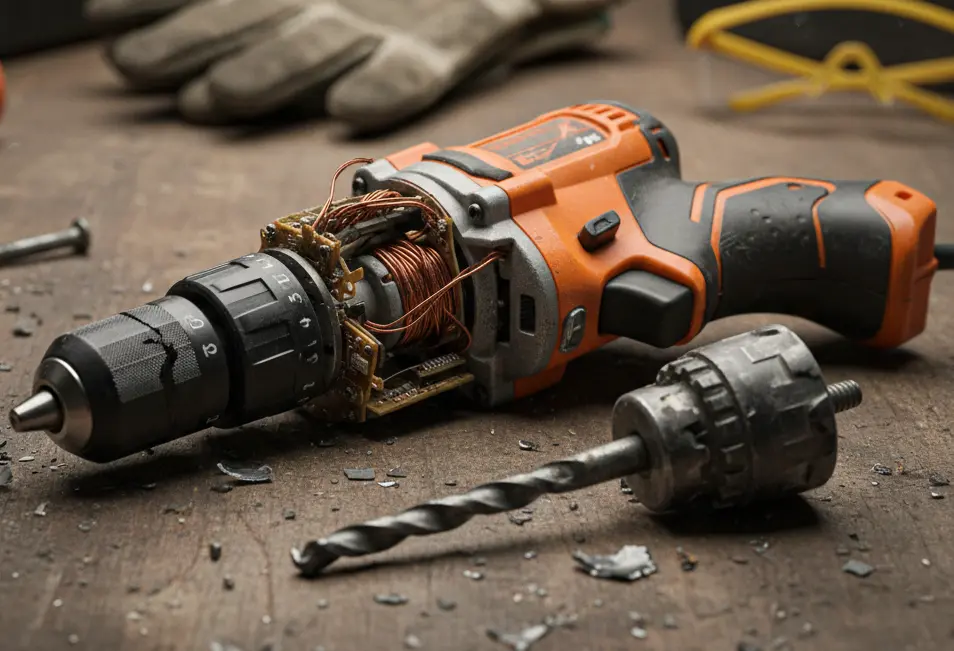Broken Drill? Here's a quick guide of common issues and fixes for a drill not working
A power drill is an essential tool in any toolbox—whether you're a professional contractor or a DIY enthusiast. So, when your drill stops working, it can bring your project to a grinding halt. Before you rush out to buy a new one, it’s worth troubleshooting the issue. In many cases, the problem is something simple you can fix at home.
This guide walks you through the most common reasons a drill might stop working and what you can do to fix it.
Common Problems and How to Fix Them
1. Dead Battery or Power Supply Issues (Cordless and Corded Drills)
Symptoms:
- No power when you pull the trigger
- Intermittent power
- Battery won't charge
Solutions:
- For cordless drills, ensure the battery is fully charged. Try using a second battery if available.
- For corded drills, inspect the power cord and try another outlet.
- Test the outlet with another device to rule out electrical issues.
2. Faulty Trigger Switch
Symptoms:
- No sound or movement when the trigger is pulled
- Works only when pressing the trigger in a certain way
Solutions:
- Clean around the trigger with compressed air.
- If the problem persists, the switch may need replacement.
3. Worn-out Brushes (in Brushed Motors)
Symptoms:
- Drill cuts out during use
- Sparks inside the motor housing
- Reduced power
Solutions:
- Open the motor housing and inspect the carbon brushes.
- If worn, replace them with compatible parts.
4. Chuck Problems
Symptoms:
- Bit spins but doesn’t drill
- Bit slips or falls out
- Chuck won’t tighten
Solutions:
- Remove and clean the chuck.
- Lubricate lightly with oil.
- If stripped or damaged, replace the chuck.
5. Overheating and Safety Lockouts
Symptoms:
- Drill shuts off after prolonged use
- Won’t start again until cool
Solutions:
- Let the drill cool down for 15–30 minutes.
- Use in shorter intervals to avoid overheating.
- Consider upgrading to a model with thermal protection.
6. Internal Motor Damage
Symptoms:
- Burning smell
- Grinding or whining noises
- Drill won’t run at all
Solutions:
- Motor damage sometimes requires professional repair, but is usually possible for competent DIYers.
- If under warranty, contact the manufacturer.
When to Replace Your Drill
If your drill is old, heavily used, or the repair cost is close to the price of a new one, replacing it may be more practical. Look for new models with brushless motors, lithium-ion batteries, and built-in safety features.
Tips to Prevent Future Problems
- Clean regularly: Remove dust and debris after each use.
- Store properly: Keep your drill in a dry, protected place.
- Don’t overwork it: Let the tool do the work—avoid forcing the drill.
- Use sharp, appropriate bits: This protects both your tool and your work surface.
- Charge batteries correctly: Avoid leaving them on the charger for too long.
Pro Tip: If you’re unsure about opening your drill or replacing internal parts, it’s best to take it to a professional repair shop or contact the manufacturer if it’s still under warranty.
Conclusion
A non-working drill can be frustrating, but it’s often fixable with a bit of troubleshooting.
Here at Power Tool Spares, we stock power tool parts for all the top manufacturers. Here's a quick link list below:
If you don't see your brand listed above, we may still be able to help. Check our "Buy Parts" page for all of the power tool brands we deal with, or you can always contact us for any specific power tool parts requirements.

